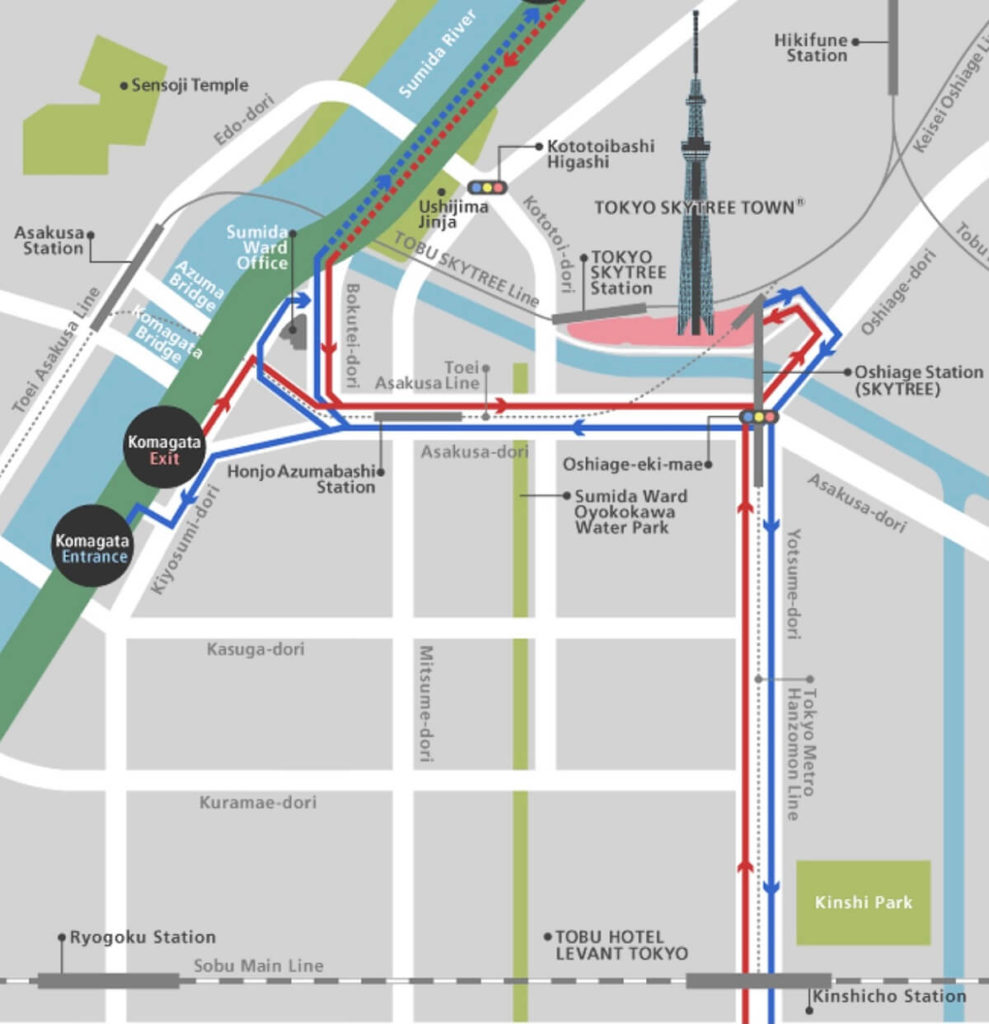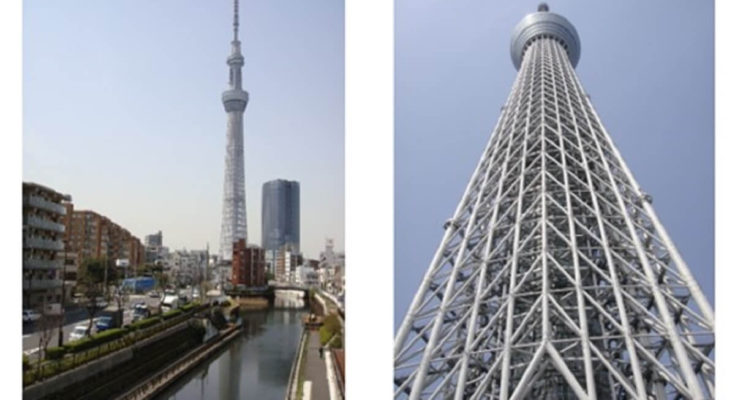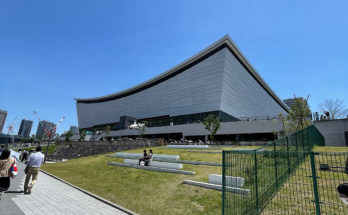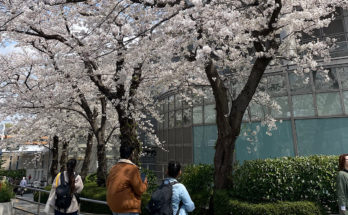Tokyo Skytree, a recent-born landmark of Tokyo since 2012, is a high-rise, self-standing digital broadcasting tower with an inherited ancient architectural wisdom and a formative art.
Inherited from the ancient wooden architecture
Tokyo Skytree is famous for its height (at 634 meters) and two observatories (at 350 meters and 450 meters) which provide visitors a spectacular view. This high-rise tower has been supported by the wisdom of ancient architectural tech combined with our modern technology. One example is its earthquake-resistant structure, which means different vibration cycles of the central column inherited from the system of five-story pagodas, such as in Nara or Kyoto in Japan. To learn more about this structure, please check this link: https://youtu.be/H7pcm5vICdU


The designer’s view of entertaining people by its formative art.
Tokyo Skytree looks somewhat curving or swelling when seen from a distance. That means it is not an absolute symmetry. Please look at these pictures: Is it an optical illusion?

These pictures were actually taken by myself several years ago. There is no deformation or modification. Then why does it look like this?
Mr.Kiichi Sumikawa, the designer of Tokyo SkyTree, created his design by combining the traits of trees that are called sori (curving, sleek part) and mukuri (gradually swelling part). These trends of trees make this tower look differently from each spot or angle, sometimes mysterious, full of wonders, and delight your eyes.
To learn more about his concept, please check this link: https://artscape.jp/artscape/eng/focus/2004_01.html
Mr.Sumikawa is a great and enthusiastic architect who feels a strong affinity with the natural growing style of woods. our ancestors had built shrines and temples by using these features: sori and mukuri -the fundamental beauty of the tree or wooden buildings and others, such as katana, Japanese sword.

These examples are not symmetrical, giving different impressions to each person, when viewing from different angles. Next time you have a chance to visit the Tokyo Skytree, you can watch this tower from a different point of view. And will notice some tips for forming art in Japanese architecture.
Imagined scenery (Existing in our daily scene)
Tokyo Skytree is a digital broadcasting tower and of course not made of wood, but in Japan, we accept a new thing into our ordinary one. For example, Tokyo Skytree and Sensouji Temple. There is no relationship between these two. However, once we get accustomed to watching these two together, they are forming one daily and imaginary scenery, and we remembered and recognized them as an integral one. The Tokyo Skytree is so tall that we may think it has been watching us or guarding us. Furthermore, we have been watching its “growth”from nothing to the completed Tower.
These impressions can be very personal, but think about the case of the Eiffel Tower in Paris. It is said that it was called an eyesore by the Parisians at that time. But for foreigners who admired and adored the city of Paris, they have a strong affinity to the Eiffel Tower. In my opinion, Tokyo Skytree can be successful like the Eiffel Tower, or, a closer example, Tokyo Tower.


Conclusion
Tokyo Skytree attracts people by its formative beauty and people’s imagined scenery. These facts are what the designer, Mr. Sumikawa wanted to be, and I, myself, would like to share the same feeling with those who will visit this tower from now on. Because Tokyo Skytree is not only the completion of Japanese craftsmanship but the integral piece of the heart of those who live around it or visit the site.

National Tour Guide (English), Eiken Grade 1, TOEIC A rank. Have been studying and teaching English for over 30 years.





 HTJ has a YouTube page! Check it out
HTJ has a YouTube page! Check it out